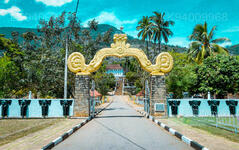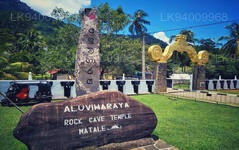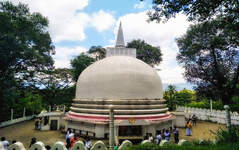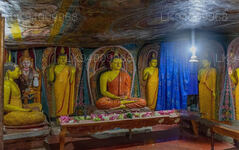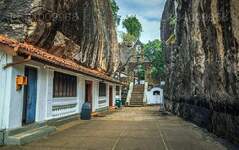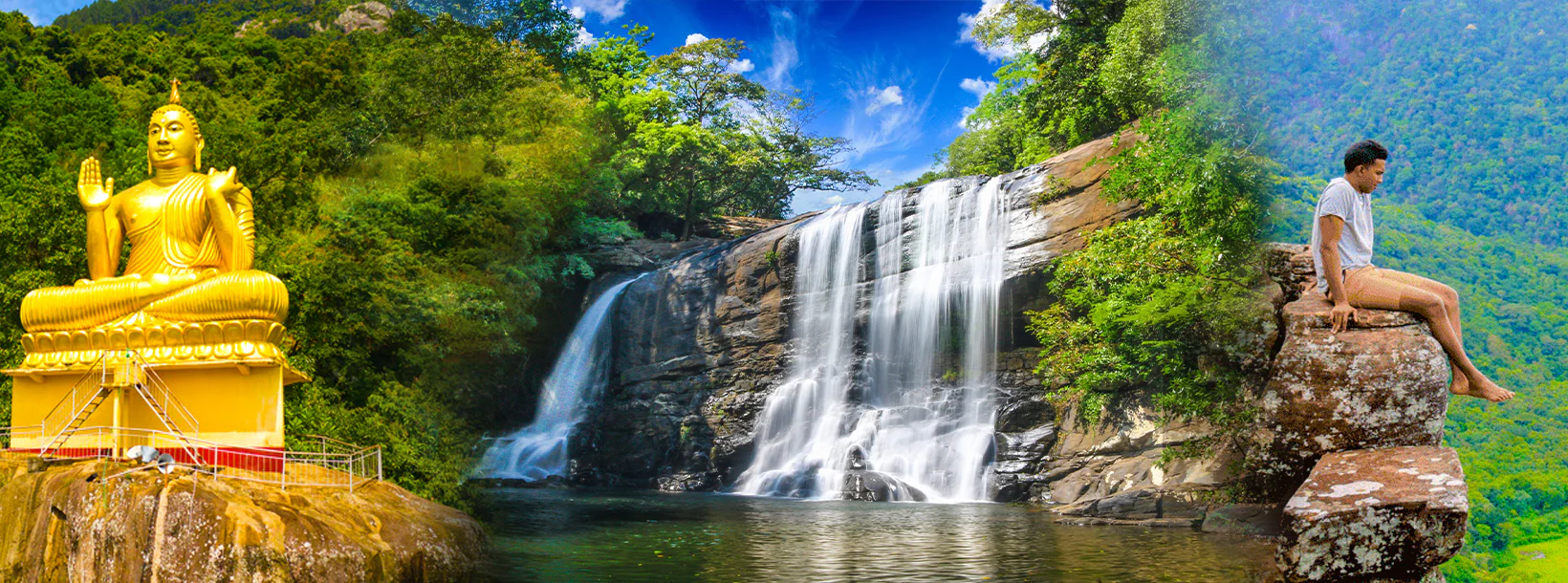
Matale City
Matale, Sri Lanka, is renowned for its lush vegetation and spice gardens. Located in the central province, it offers a rich cultural experience with cooking classes and demonstrations. Visitors can learn traditional recipes and techniques, such as clay pot cooking, and enjoy dishes like chicken curry and dhal curry, making Matale a culinary and cultural treasure.
Aluvihara Rock Cave Temple
THhe birth of the Tripitakaya
Aluviharaya cave temple in Sri Lanka (birth place of the tripitaka) is a rock-cave temple close to Matale where Buddhist monks wrote the Tripitakas during King Walagamba’s rule. These Tripitakas originally had come down by mere word of mouth by being committed to memory by Buddhist monks of the time. Such Tripitakas are classified into three divisions. They are:
(1) Vinaya Pitakaya (Basket of Discipline)
(2) Sutta Pitakaya (Basket of Discourse)
(3) Abidharma Pitakaya (Basket of Metaphysics)
The Structure
At the entrance of the Aluviharaya cave temple in Sri Lanka is a solid Pandal with an arch constructed out of concrete it leads to a steep climb of stone steps leading to the Meda-midula — the frontage terrace. Then from there, rise stone steps making way to the drip ledge rock caves.
The Aluviharaya cave temple in Sri Lanka has a library containing a gallery of antiques ranging from Buddhist statues made out of clay, brass, marble, while some of them have been gold plated. There are also very valuable Buddha statues gifted by Siam, Cambodia, China, Japan, and Myanmar, together with other archaeological artifacts. The first cave is about 25 feet long and 10 feet high and it was one of the venues where some of these old Thripitaka were written on Ola leaves in Pali by Buddhist monks. On its apex is written in bold Sinhala letters that the Thripitaka were written during the rule of king Walagamba.
It’s a rock cave shelter that harbors an Image House decorated with the typical Makara Thorana. There are also seated, standing, and recumbent Buddha statues of terra-cotta, while the murals are adorned with paintings of Jathaka stories. Kandyan period paintings are covering the cave ceilings. A spiral stone staircase ends on its summit where the Sacred Bo Tree stands serenely cloistering an image house in this rock cave. The third cave is met amidst a conclave of rock boulders where is sheltered another rock cave where the Thripitaka were written on Ola leaves by the ancient Buddhist monks and a commodious residence for the present-day Bhikkhus arriving from all four quarters.
About Central Province
The Central Province of Sri Lanka consists primarily of mountainous terrain. The province has an area of 5,674 km², and a population of 2,421,148. Some major towns include Kandy, Gampola (24,730), Nuwara Eliya and Bandarawela. The population is a mixture of Sinhalese, Tamil and the Moors.
Both the hill capital Kandy and the city of Nuwara Eliya are located within the Central Province as well as Sri Pada. The province produces much of the famous Ceylon tea, planted by the British in the 1860s after a devastating disease killed all the coffee plantations in the province. Central Province attracts many tourists, with hill station towns such as Kandy, Gampola, Hatton and Nuwara Eliya. Temple tooth or Dalada maligawa is the main sacred place in Centrel province.
The climate is cool, and many areas about 1500 meters often have chilly nights. The western slopes are very wet, some places having almost 7000 mm of rain per year. The eastern slopes are parts of the mid-dry zone as it is receiving rain only from North-Eastern monsoon. The Temperatures range from 24°C at Kandy to just 16°C in Nuwara Eliya, which is located 1,889 m above sea level. The highest mountains in Sri Lanka are located in the Central Province. The terrain is mostly mountainous, with deep valleys cutting into it. The two main mountain regions are the central massif and the Knuckles range to the east of Kandy.

